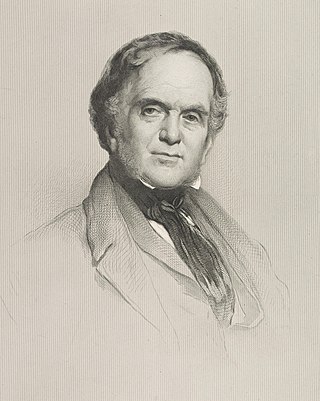
Midlothian is registration county, lieutenancy area and one of 32 council areas of Scotland used for local government. Midlothian lies in the east-central Lowlands, bordering the City of Edinburgh council area, East Lothian and the Scottish Borders. The modern council area was formed in 1975 when the historic county of Midlothian, also known as Edinburghshire, was altered substantially as part of local government reforms; its southern part formed a new Midlothian District within the Region of Lothian, whilst areas on the peripheries were assigned to other districts and the city of Edinburgh, which had always been autonomous to an extent, was formally separated as the City of Edinburgh District. In 1996 Midlothian became a unitary authority area, using the same name and territory as in 1975.

Dalkeith is a town in Midlothian, Scotland, on the River Esk. It was granted a burgh of barony in 1401 and a burgh of regality in 1540. The settlement of Dalkeith grew southwestwards from its 12th-century castle . Dalkeith has a population of 12,342 people according to the 2011 census.

William Henry PlayfairFRSE was a prominent Scottish architect in the 19th century who designed the Eastern, or Third, New Town and many of Edinburgh's neoclassical landmarks.

Sir George Clerk of Pennycuik, 6th Baronet was a Scottish politician who served as the Tory MP for Edinburghshire, Stamford and Dover.

Clan Scott is a Scottish clan and is recognised as such by the Lord Lyon King of Arms. Historically the clan was based in the Scottish Borders.

The Heart of Mid-Lothian is the seventh of Sir Walter Scott's Waverley Novels. It was originally published in four volumes on 25 July 1818, under the title of Tales of My Landlord, 2nd series, and the author was given as "Jedediah Cleishbotham, Schoolmaster and Parish-clerk of Gandercleugh". The main action, which takes place between September 1736 and May 1737, is set in motion by the Porteous Riots in Edinburgh and involves an epic journey from Edinburgh to London by a working-class girl to obtain a royal commutation of the death penalty incurred by her sister for the alleged murder of her new-born baby. Despite some negative contemporary reviews, some now consider it Scott's best novel.

William Kerr, 6th Marquess of Lothian,, was a British soldier, landowner and politician. He was the son of William Kerr, 5th Marquess of Lothian. He served as a representative peer from 1817 to 1824.
Muckhart commonly refers to two small villages in Clackmannanshire, Scotland, Pool of Muckhart and Yetts o' Muckhart. Muckhart is one of the Hillfoots Villages, situated on the A91 around 3 miles northeast of Dollar. The Gaelic name, Muc-àird, comes from muc ("pig") + àird ("height"), and may derive from the fact that the surrounding fields may once have been used for pig farming.

Crichton Castle is a ruined castle near the village of Crichton in Midlothian, Scotland. It is situated at the head of the River Tyne, 2 miles (3.2 km) south of the village of Pathhead, and the same distance east of Gorebridge.

Clan Lindsay is a Scottish clan of the Scottish Lowlands.

The Forresters are an ancient and noble clan of the Scottish Lowlands.

Giffordland is in North Ayrshire, Parish of Dalry (Cunninghame) in the former Region of Strathclyde, Scotland.

Sir John Henderson FRSE FSA, fifth of the Henderson baronets of Fordell, Fife, was a Scottish nobleman and politician. He trained as a lawyer and was also a competent antiquary.

Charles George Hood Kinnear FRIBA ARSA FRSE was one half of Peddie & Kinnear partnership, one of Scotland’s most renowned and prodigious architectural firms. They were noted for their development of the Scots Baronial style, typified by Cockburn Street in Edinburgh, which evokes a highly medieval atmosphere. Kinnear was also a pioneer photographer credited with inventing the bellows attachment on early cameras.

an Isabella "Ella" Robertson Christie was a pioneering Scottish traveller and explorer, landowner, gardener and author.
David Douglas FRSE FSA was a Scottish publisher in the 19th century. He was publisher of works by authors including John Stuart Blackie and Dr John Brown. In later life he formed half of the successful Edinburgh publishing business Edmonston & Douglas. The latter were responsible for a highly popular set of animal prints aimed at children. His final partnership was called Douglas & Foulis.

Francis Brown Douglas FRSE DL was a Scottish advocate who served as the Lord Provost of Edinburgh from 1859 to 1862.
George Smith RSA was a Scottish artist specialising in landscapes and animals, with an emphasis on horses at work.
Colonel Sir Robert "Bobby" Christie Stewart KCVO CBE TD was a Scottish landowner who had a military career in the British Army and was a Lord Lieutenant of two counties in Scotland. He was generally referred to in the community as R. C. Stewart.
















